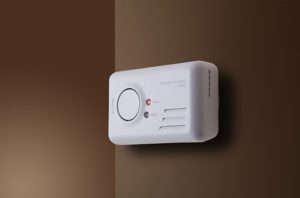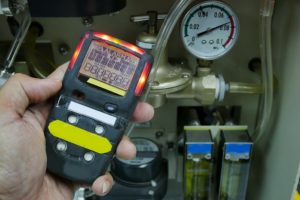If you own a business and work in an industry that involves the presence of toxic gases, you’ve probably given a good bit of thought to keeping your employees safe. Many toxic gases present in industrial spaces are colorless and odorless, which means they can’t be detected by human senses. Therefore, many businesses that regularly work with volatile compounds employ detection technology, such as a gas monitor or portable gas detector, to alert staff to the presence of dangerous compounds.

While both the gas monitor and portable gas leak detector fulfill important roles in the workplace chain of safety, there are some important distinctions to make between the two, especially if you plan to outfit your premises with reliable gas safety systems. Even if you don’t work with dangerous toxic gases in your industry, more common but equally lethal substances, such as carbon monoxide, can form pockets in confined spaces that can endanger worker safety. In any manufacturing environment, it’s important to have the proper detection technology in place. Therefore, it’s never too early to seek out a quality gas monitor or portable gas detector for sale. Keep reading to learn more about some of the important differences in gas detectors and gas monitors and when it’s appropriate to use each one.
Gas Detectors
A gas detector is an important part of the overall safety plan for your premises, especially if your workspace routinely houses potentially dangerous chemicals and gases during the manufacturing process. There are two basic styles of gas detectors used in commercial and industrial spaces. Some are fixed, meaning they are mounted in an area that is most likely to experience concentrations of dangerous gases or leaks. Detectors can also be portable, meaning employees can move them around in a high-risk area to measure concentrations of gases and get real-time results. Many fixed gas detectors are tied to the overall building automation system. That allows alerts to be distributed immediately to all staff in the event of a leak or dangerous gas exposure. Detectors can be ultrasonic or infrared, and they can be used to detect substances that may be flammable, combustible, or pose inhalation hazards. A portable multi-gas detector can concurrently analyze the air in a variety of spaces for a range of toxic gases. Gas detectors also can be used to alert employees to low oxygen areas. Their primary benefit is that they allow a large group of people working in a commercial or industrial space to be immediately notified when dangerous concentrations of gases are reached.
Gas Monitors

Like gas detectors, gas monitors can be fixed or portable, though most monitors are portable in nature. They are used more for individual alerts, unlike gas detectors that are used to send warnings to entire buildings. Monitors are usually carried by employees or worn on their clothes to alert them as they move through your premises. If employees encounter concentrations of noxious gases or areas of low oxygen, they are immediately alerted of the concentration by the device to prevent them from entering a dangerous situation. Because of the way they are used, most gas monitors are small, light, and rugged so they can be ever-present on employees and provide them with constant coverage. Gas monitors can be designed to detect a single gas, multiple gases, or low oxygen areas. They come in two common styles. Diffusion monitors feature sensors that can analyze gases when in direct contact with them. Pump-style monitors pull samples of air for analysis.
If you work in an industry that commonly uses or produces dangerous gases, it makes sense to use the latest in gas detection technologies to keep your employees safe in the workplace. To learn more about the differences between gas monitors and gas detectors, visit DOD Technologies, Inc.






